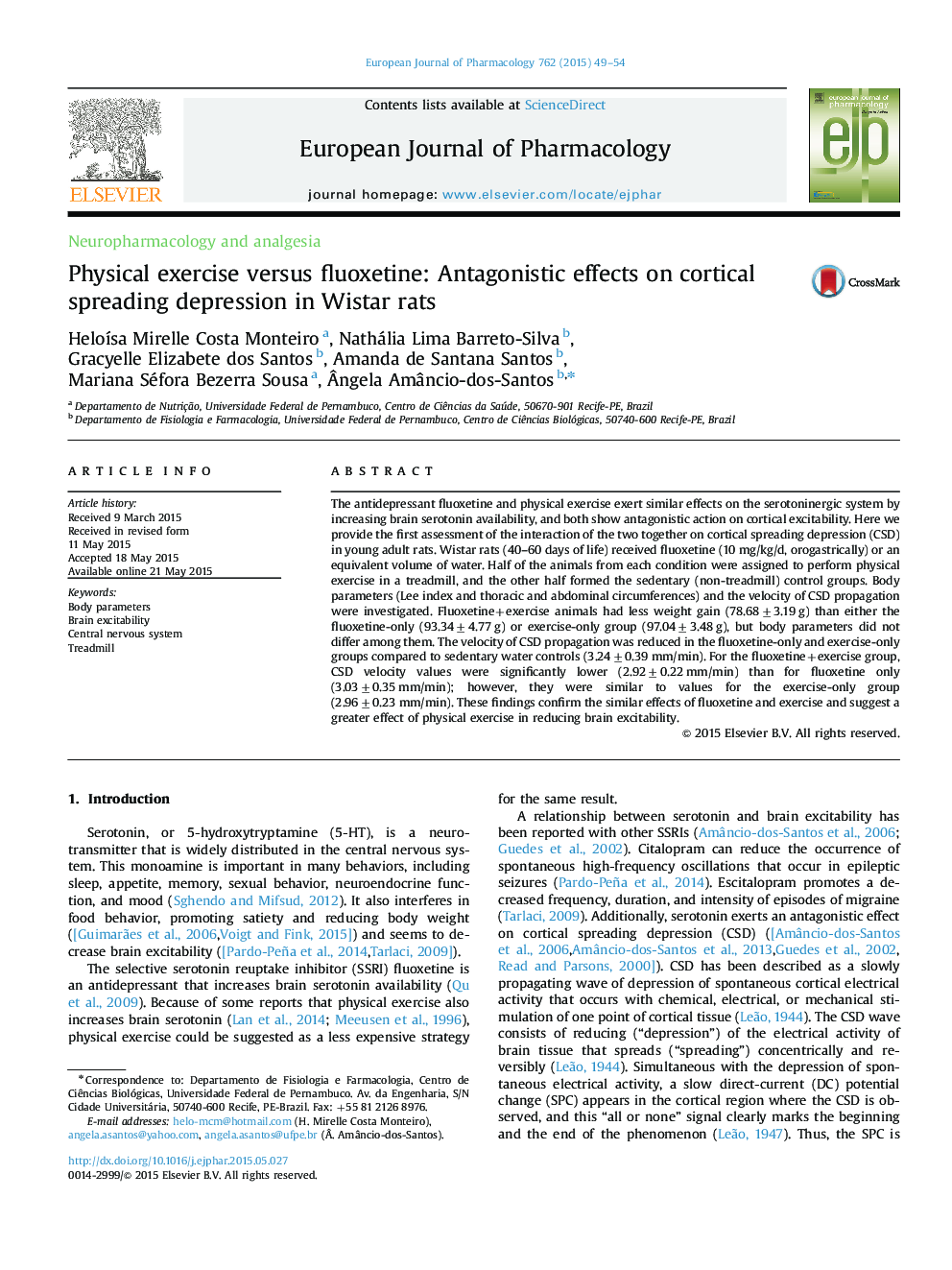| Article ID | Journal | Published Year | Pages | File Type |
|---|---|---|---|---|
| 5827163 | European Journal of Pharmacology | 2015 | 6 Pages |
The antidepressant fluoxetine and physical exercise exert similar effects on the serotoninergic system by increasing brain serotonin availability, and both show antagonistic action on cortical excitability. Here we provide the first assessment of the interaction of the two together on cortical spreading depression (CSD) in young adult rats. Wistar rats (40-60 days of life) received fluoxetine (10 mg/kg/d, orogastrically) or an equivalent volume of water. Half of the animals from each condition were assigned to perform physical exercise in a treadmill, and the other half formed the sedentary (non-treadmill) control groups. Body parameters (Lee index and thoracic and abdominal circumferences) and the velocity of CSD propagation were investigated. Fluoxetine+exercise animals had less weight gain (78.68±3.19 g) than either the fluoxetine-only (93.34±4.77 g) or exercise-only group (97.04±3.48 g), but body parameters did not differ among them. The velocity of CSD propagation was reduced in the fluoxetine-only and exercise-only groups compared to sedentary water controls (3.24±0.39 mm/min). For the fluoxetine+exercise group, CSD velocity values were significantly lower (2.92±0.22 mm/min) than for fluoxetine only (3.03±0.35 mm/min); however, they were similar to values for the exercise-only group (2.96±0.23 mm/min). These findings confirm the similar effects of fluoxetine and exercise and suggest a greater effect of physical exercise in reducing brain excitability.
